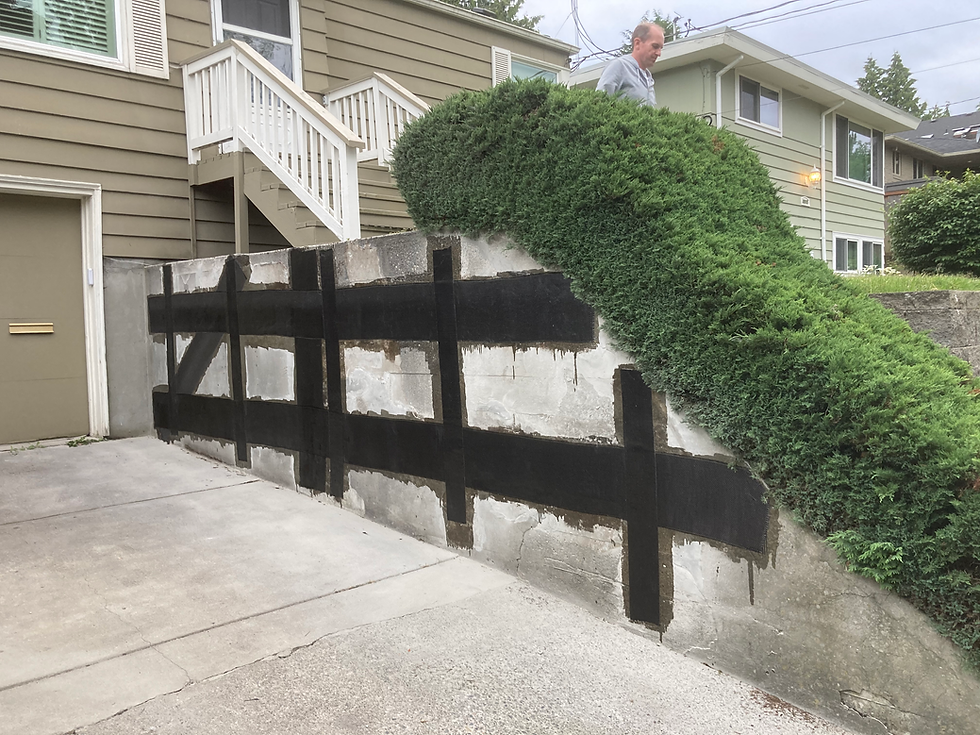A growing number of foundation repair contractors are turning to carbon fiber to expand their structural repair solutions for retaining wall strengthening and reinforcement. By understanding the capabilities and applications of carbon fiber, contractors are able to provide value added solutions for common structural issues facing retaining walls.
Since retaining walls vary greatly in their construction, the reasons they fail and the subsequent damage can vary greatly. The causation of the failure and the cracking pattern in the wall help determine the appropriate and most effective composite repair solution.

Understanding the technical properties of carbon fiber are an important step in prescribing an effective design that best utilizes the immense tensile strength of the material. Since the fiber orientation of the unidirectional and bidirectional fabrics are distinctly different, the correct placement of the carbon fiber straps are critical to the performance of the repair.

In the instance of this residential retaining wall, horizontal and vertical cracks were exhibited running in various directions along the wall. Due to the horizontal cracking and lack of vertical reinforcing steel, the 6" SRS-600 Unidirectional was placed vertically along the wall. Since all of the carbon fiber tows in the unidirectional fabric are oriented in the same direction, along the length of the material, this vertical placement greatly increases the flexural capacity of the wall.

The vertical and horizontal cracks in the wall were filled with a high compressive strength epoxy paste as well as hydraulic cement prior to the surface being ground to an appropriate concrete surface profile (CSP-3)

Once the surface had been properly prepared and vacuumed, the 12" SRS-660 Bidirectional Carbon Fiber fiber straps were applied over all over the cracks. The orientation of the bidirectional fabric provides strength in both directions, along the crack as well as perpendicular to it. With over 35,000 lbs/sf of confinement strength, the addition of the SRS-660 BI provides permanent reinforcement over the cracks, preventing them from spreading further apart. Once the installation was complete a protective finish was applied to blend in with the existing concrete and protect the system from damaging UV rays.

One other item to consider when repairing retaining walls is restraint. You can add all the strength that you want but if there is not restraint or an appropriate footing to resist overturning, the wall could still fail. Tiebacks or wall anchors are typically used to provide this restraint. When restraint is added, sometimes it is also necessary to provide flexural strengthening to ensure that the wall can resist these forces. This is typically accomplished by running the 6” wide SRS-600UNI material vertically along the wall.

Comments